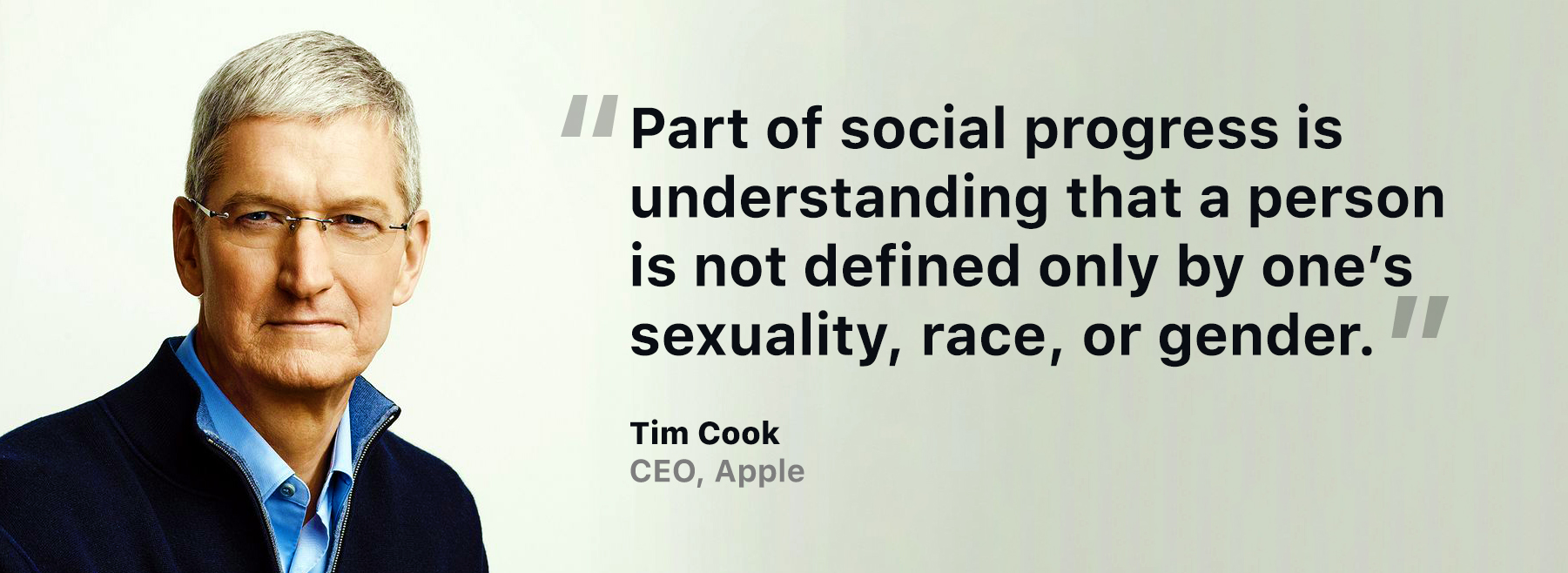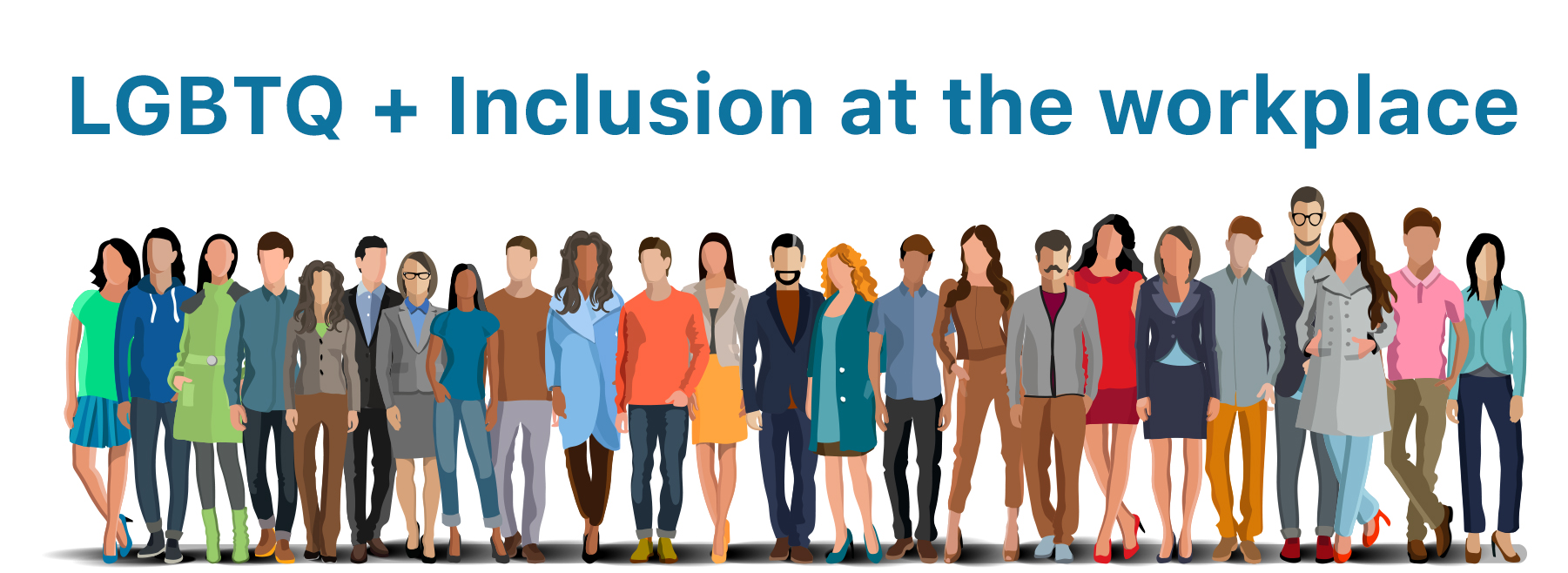|
|
“Strength lies in differences, not in similarities.” – Stephen Covey
Fact: Diversity is a fact; Inclusion is a choice.
Fact: Diversity and Inclusion affects organizations’ bottom lines.
Fiction: Diversity automatically translates to Inclusion.
Source: Zinnov research & analysis
An average person ends up spending close to 90,000 hours at work, over their lifetime. That amounts to 1/3rd of their life. Let that sink in for a moment. So it’s safe to say that an environment that makes you feel comfortable, a place where you can be yourself, is a basic necessity for a workplace. But if one identifies as a Lesbian, Gay, Bisexual, Transgender, Queer, or any of the identities on the spectrum, can one really be their true self in the workplace?
The LGBTQ+ community, though marginalized for the most part, is an integral part of the workforce across organizations, big and small. With the opinionated and liberal millennials entering the workforce, it becomes all the more important for organizations to foster a work culture that is not just diverse, but inclusive as well. After all, diversity doesn’t necessarily or naturally translate to inclusivity; it has to trickle down from the top, with significant investment from the leadership team. With Glassdoor finding that 67% of people weigh diversity as a factor when deciding where to work, it’s a no-brainer for organizations to focus on being a diverse and inclusive workplace from a business perspective as well.
Studies show that LGBTQ+ employees positively impact organizations’ bottom line, thus making an interesting financial case around LGBTQ+ inclusion in the workforce. Despite a direct correlation between LGBTQ+ inclusion and economic returns, many leadership teams fail to understand the importance of having policies and regulations that protect and empower these employees.

There is a strong case to be made for LGBTQ+ inclusion in workplaces. This has the potential to drive economic and business growth, which in turn drives greater employee productivity and contribution. This leads to increasing the innovation capability of organizations, thus leading the way for a more diverse and inclusive organizational culture across verticals.
LGBTQ+ inclusion in workplaces creates a conducive environment of creativity and diversity that drives economic growth. Cities – tier 1 and 2 – are major drivers of this growth, as people tend to migrate to cities that are more LGBTQ+ inclusive, because they are open, tolerant, and accepting of all kinds of people. This helps them assimilate and integrate themselves in the community faster, thus driving effective economic growth through their contributions. Diversity of thought and perspectives foster innovation, contributing to the development of economies that are knowledge-based.
Diverse and inclusive organizations have the potential to tap into global markets. Conversely, LGBTQ+ discrimination has the potential to hinder global customers from using global suppliers, who have codes of conduct in place that make it necessary to not discriminate on the basis of gender identity and/or sexual orientation. Companies such as Apple, Sony, HTC Corporation, etc., have non-discrimination policies that place them at the forefront of creating diverse and inclusive organizational culture.
There is an impending war for talent that organizations are waging. However, companies that are more diverse and inclusive have a decided edge when compared to their peers who cannot be bothered with D&I. Diversity strategies help organizations in recruiting top talent, hence ensuring that D&I is a business imperative, rather than a PR exercise. LGBTQ+ inclusion has a major commercial benefit for organizations in the form of attracting top talent and showcasing a good work-life balance as well. Most employees expect some overlap between their personal and professional lives, in order to be their most productive selves. And this is especially true for millennials, who will form the majority of the workforce in the next few years.
Several studies have shown that organizations that prioritize D&I have higher rates of retention of their talent pool, thus improving their bottom line. Conversely, LGBTQ+ discrimination results in higher churn rates, where organizations are forced to spend huge capital on recruitment and training new employees. With the war for talent in battle-ready mode, organizations can’t afford to lose out on top talent because of a lack of D&I policies and initiatives.
Innovation is the moat that organizations have come to depend upon, to keep from being disrupted by new age players in their domain. And many a study indicates that organizations which are more diverse and inclusive have higher levels of innovation and creativity. Some of the most innovative organizations in the world such as Apple, Microsoft, etc., have D&I at the core of their organizational culture. Apple, one of the most valued companies in the world, has Tim Cook at its helm, who is an openly gay business leader. Remarking on Apple’s slogan – Inclusion Inspires Innovation, he said, “It’s the future of our company.”

Despite several tangible benefits to building a diverse and inclusive workplace, many organizations are still grappling with formulating policies and regulations that work best for them. Additionally, D&I has to be an organizational priority embedded in its culture, for it to have a positive effect. The leadership needs to realize that D&I is a business imperative rather than an HR obligation. So what can organizations do to make their workplaces diverse as well as inclusive of LGBTQ+ employees? For one, something as simple as talking about what is happening in the LGBTQ+ community outside the workplace helps because there is no distinction between the business world and the outside one.
The word diversity is usually correlated with having more women in the workforce. However, this is an umbrella term that can include national diversity (employees from different nationalities), gender (particularly in male-dominated domains), sexual orientation (LGBTQ+ employees across the spectrum), PwD (people with disabilities), religions, and employees who have varied and/or diverse work backgrounds. In essence, diversity encompasses people of all shapes, sizes, colors, and identities. Having an open mind is key to achieving true diversity in any organization.
“Those who cannot change their minds cannot change anything.” – George Bernard Shaw
A person’s experience colors the lens through which they view the world, thus affecting their perspectives. Moreover, research has shown that diverse teams show higher productivity, higher creativity, prevent groupthink, and even higher innovation potential than teams consisting of people with similar backgrounds.
A diverse workforce naturally translates to an organization possessing a diverse set of skills and capabilities. Organizations that employ LGBTQ+ employees and/or people with disabilities, will have an inherent advantage while designing products and services to cater to their niche needs.
Networks of women, LGBTQ+, PwD, etc., are crucial to addressing issues concerning their inclusivity and standing in the organization as a whole. This network effect trickles through organizations, helping translate an inclusive work culture and not just a diverse one.
Several studies have revealed that prospective employees research if an organization has Diversity & Inclusion (D&I) policies in place when deciding on an opportunity with their most recent employer.
LGBTQ+ inclusion in organizations is a journey of progressive realization, and not an overnight change in organizational culture. The intent behind creating a diverse and inclusive organizational culture needs to be clear for business leaders, with leadership and business commitment driving this change from top down. Such a massive change has to have leadership buy-in, along with necessary changes in organizational structure, processes, technology (in some cases), and people (the most challenging and the most rewarding change).
Unintentional exclusion prevents complete inclusion. Being recognized and identified, and being respected for who they are is what everyone craves. By extending the same to all, regardless of which community they identify with, at the workplace and elsewhere, organizations can take that all-important step towards creating a diverse and inclusive workplace.